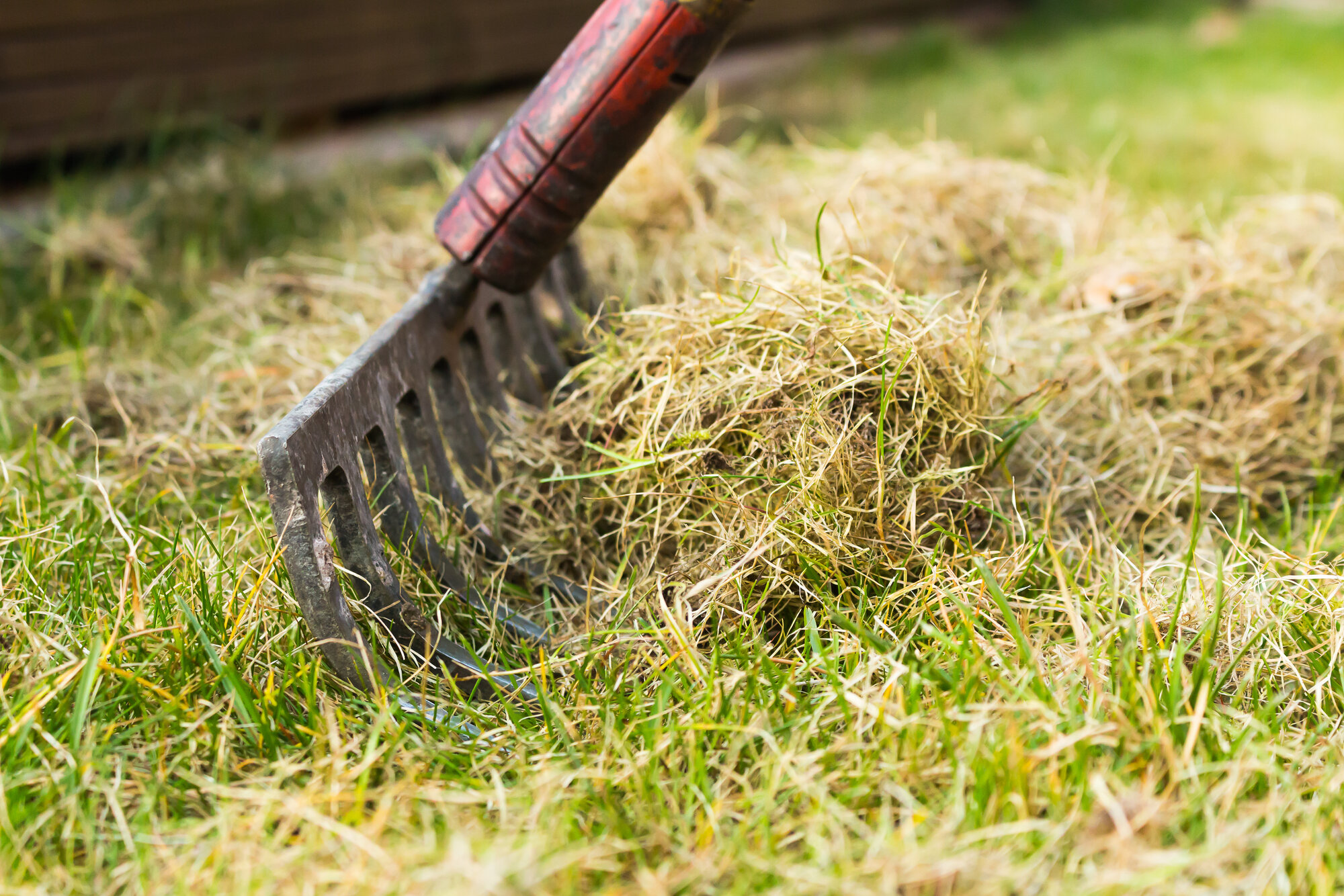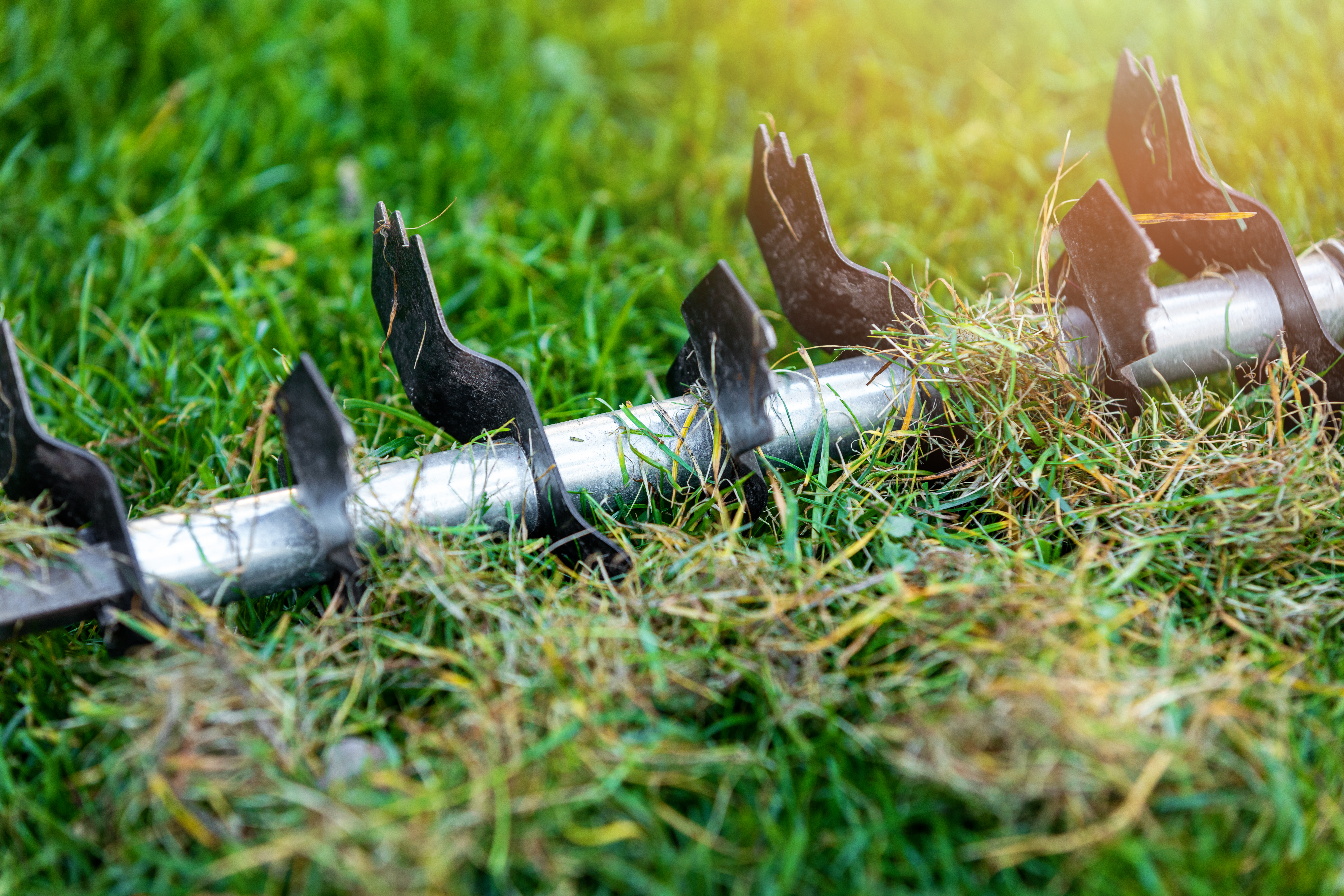Dethatching
What is meant by dethatching?
Detatching is the removal of lawn thatch and moss from the sward. In order to remove dead plant parts and weeds from the lawn, the thatch is removed from the grass with a dethatcher or verticutter. This gives the lawn more light, air and space to grow. The word verticutter is derived from the concept “vertical cut” and refers to vertical cutting or scoring of the ground with special equipment. If you dethatch your lawn regularly (at least 1 x and max. 2 x per year), you can significantly improve the condition of the lawn.
Why should one detatch?
- To keep your lawn in a better condition: Removing moss and thatch not only improves the appearance of the lawn, it also improves the growth conditions for the grass (improved water and oxygen supply allows grass to sprout and thrive again)
- To prevent weeds from growing: With moss and thatch removed, there is less growth of new weeds
There are several reasons why moss appears in lawns. Contrary to what is often assumed, a low pH value is not the only cause. Despite good care, every lawn eventually gets older and more patchy. For this reason, reseeding should also be carried out after dethatching in conjunction with spring fertilisation. Your lawn is rejuvenated every spring with new seeds and looks immaculate again in a fresh, strong green.

When should you dethatch?
- The grass is more brown than green
- There is thatch between the grass blades
- The lawn is interspersed with weeds, moss and wild herbs (e.g. dandelion).
- The lawn is heavily used (e.g. from playing soccer)
- Soil compaction was caused by snow in winter
- There are many leaves lying on the grass (from trees etc.)
- The lawn is too wet
There is a simple test you can do to check whether the lawn should be dethatched:
pull a rake lightly through the lawn in several places and see if it is really free of moss and weeds. If anything sticks to the tines of the rake (grass or moss pads), this is usually a sign that you should dethatch. On the other hand, if you come up with a few dead blades without any noticeable moss, you know that your lawn is in ecological balance and there is no need for dethatching.
Time of year: Dethatching can be done from spring (April) to autumn (September) if the soil is dry and the temperature is 15-20 °C. Damp soil should not be dethatched, otherwise you will pull out too much of the roots of the lawn.
How to repair and rejuvenate your lawn:
Remove leaves and similar debris from the lawn and mow the lawn as deep as possible (2 cm) so that only stubble remains. Work with a grass catcher bag so that the clippings are removed immediately. If there are any clippings left on the lawn, rake them off with a rake to make sure the area is “clean”.
Now quickly dethatch the lawn lengthwise and crosswise to remove thatch and plant debris. Set the dethatcher so that the ground is scarified by a maximum of 2-3 mm. (If you work on the same spot for too long, you increase the risk of damaging the lawn.) Then clean the area thoroughly with a rake so that the lawn seed has enough light, air and space to thrive. It is normal for the lawn to look battered after being dethatched.
Now you can proceed with reseeding. The repair products are applied evenly according to the instructions for use and rolled over if necessary. To accelerate germination and to prevent the seedlings from drying out, the seed must be kept moist by irrigation. Fertilise the lawn (shortens the regeneration time), irrigate it and add sand (a thin layer of sand makes the soil looser).
The first cut should be made when growth is at a height of 8-10 cm.
After thatching, the lawn should be watered and fertilised so that it recovers quickly.

